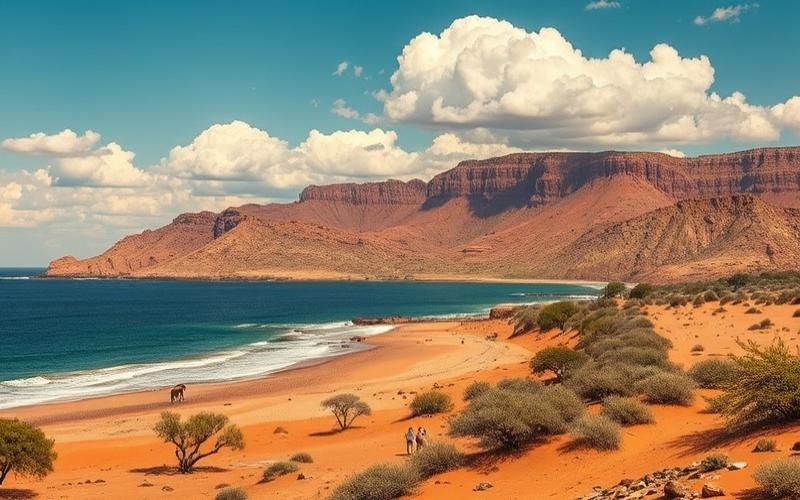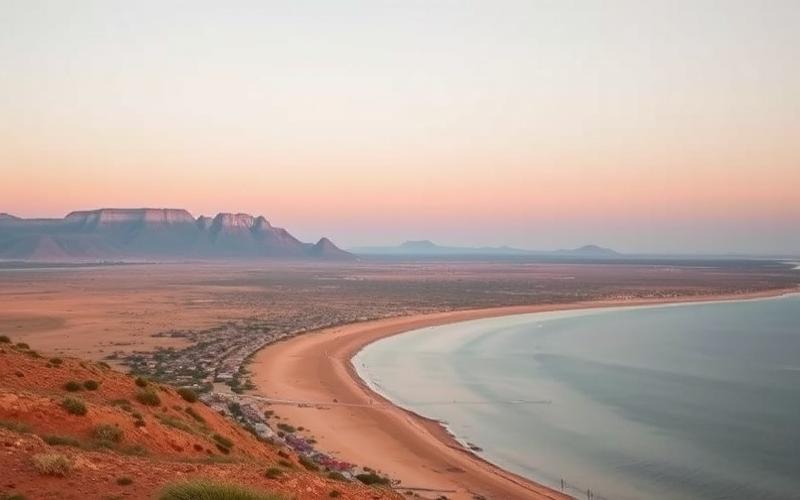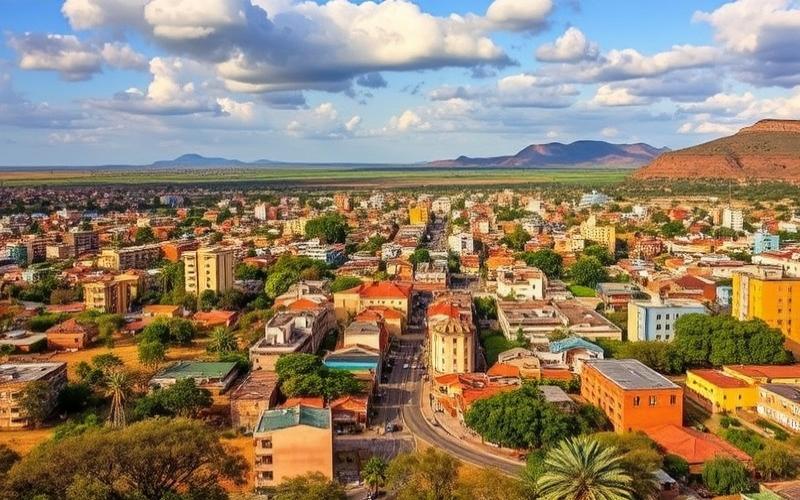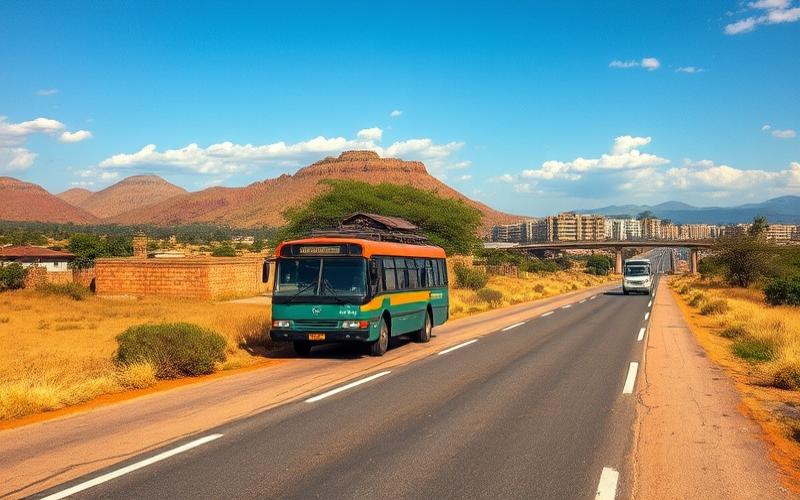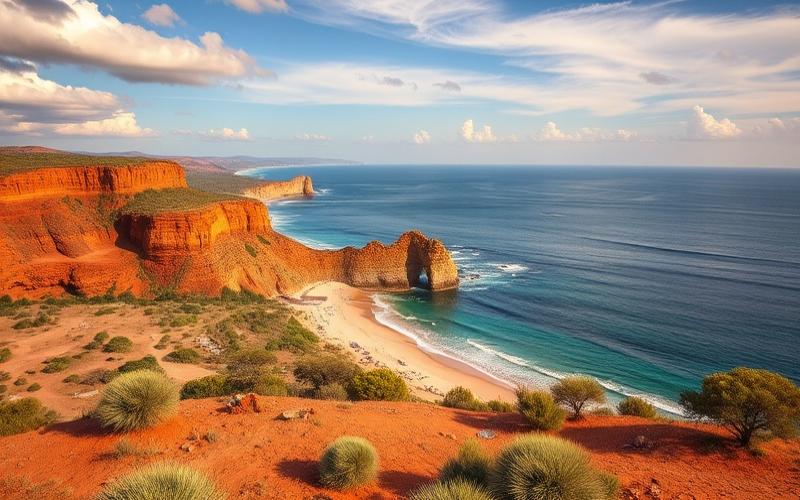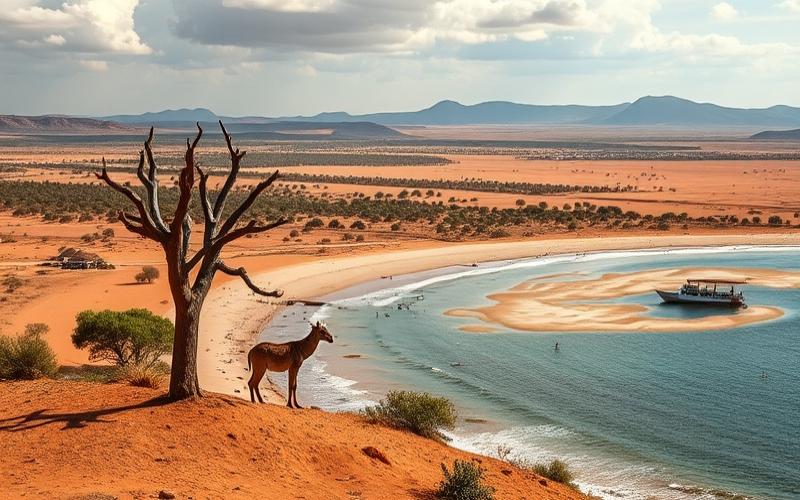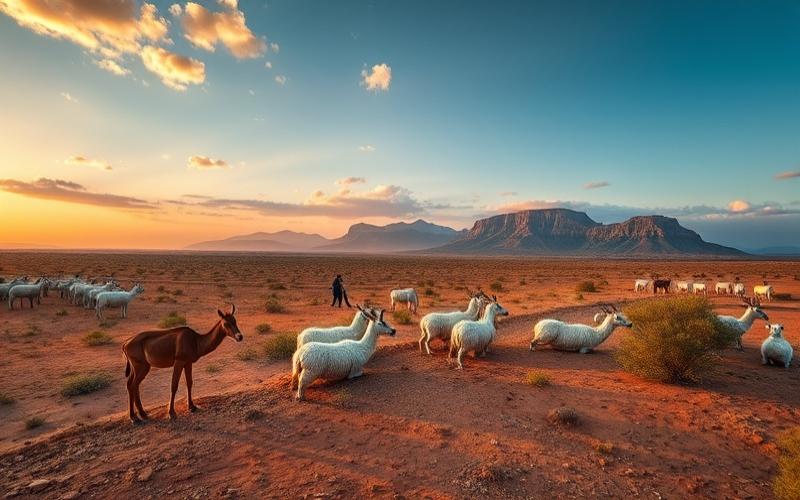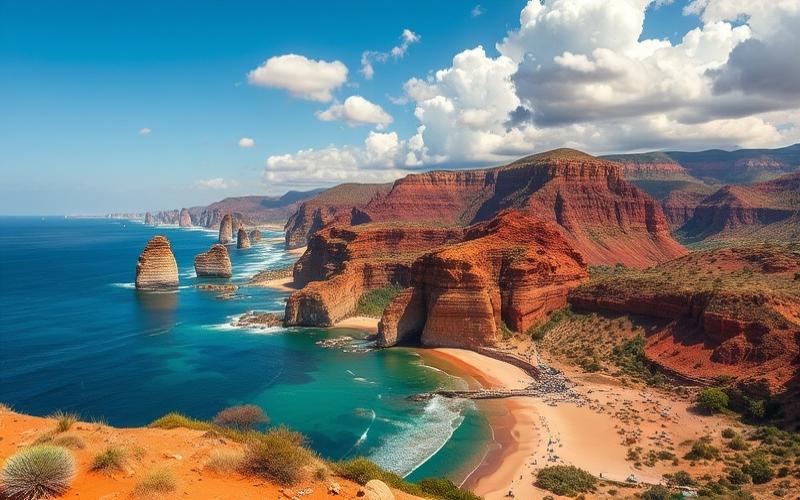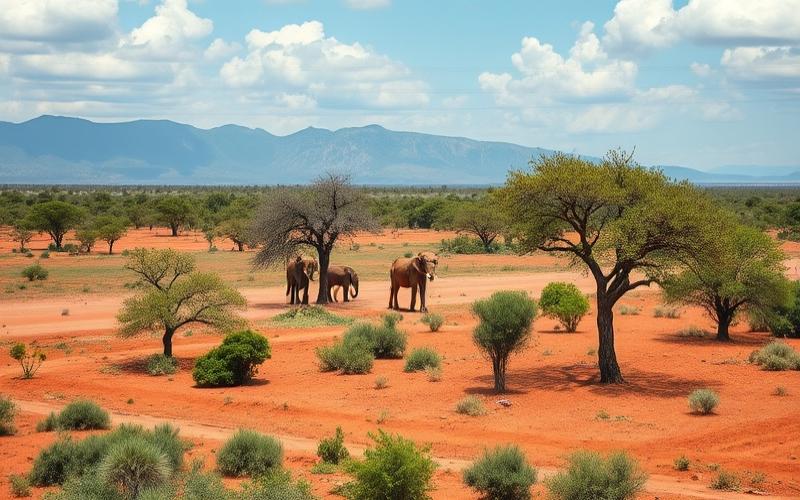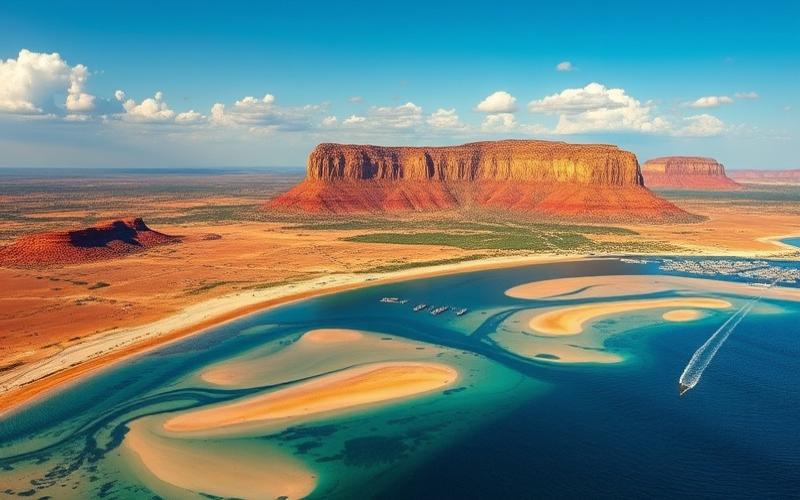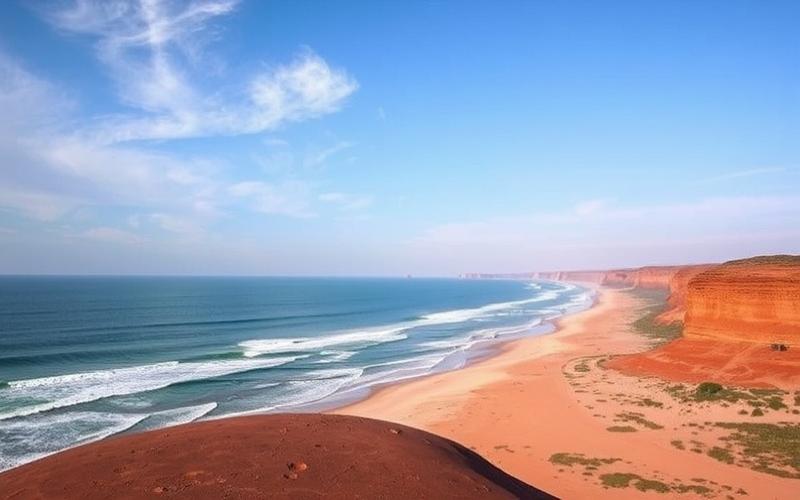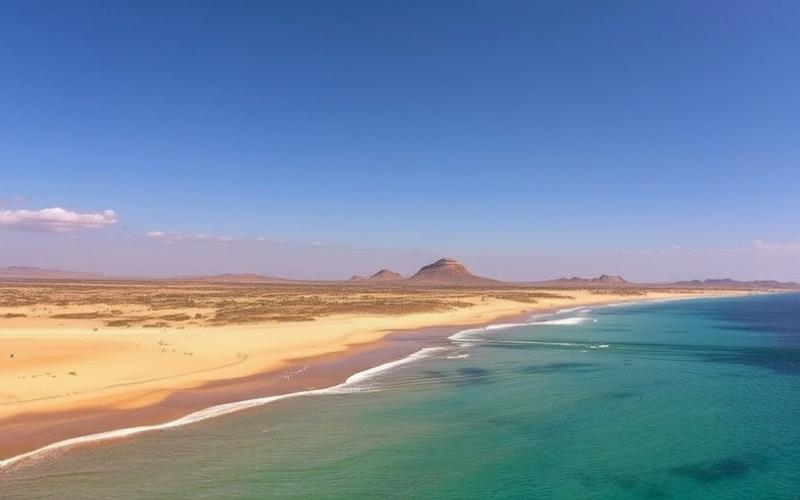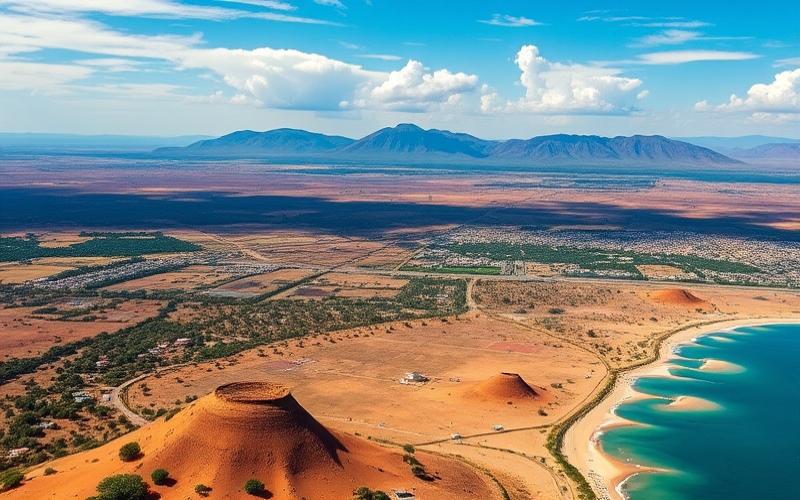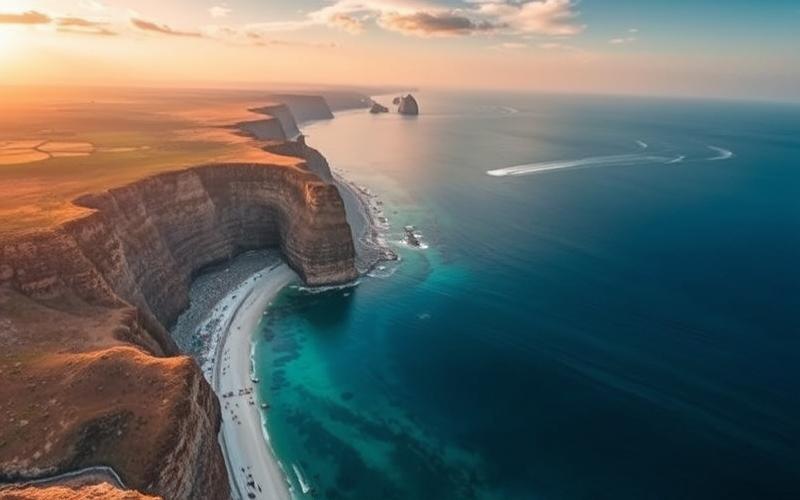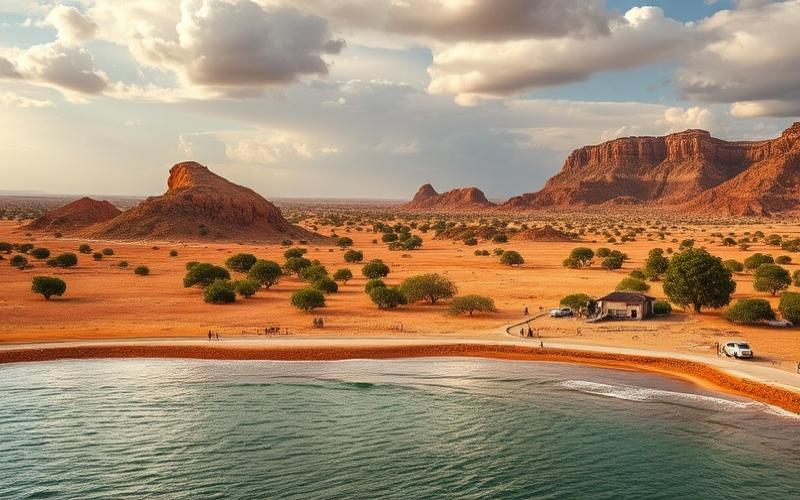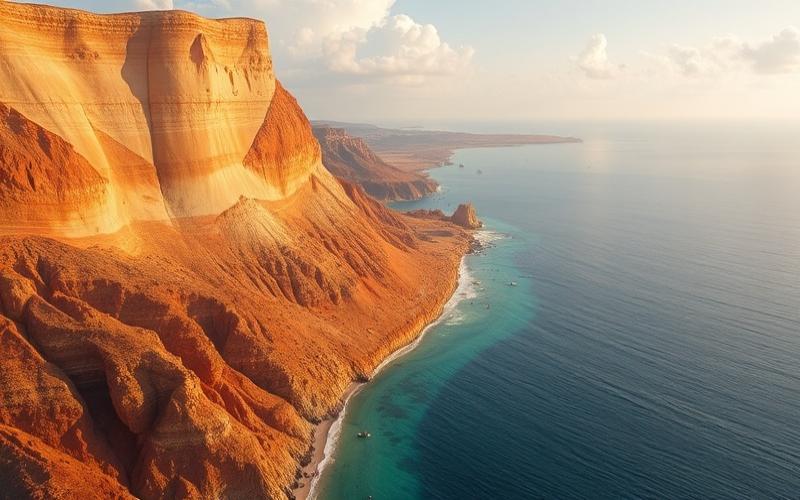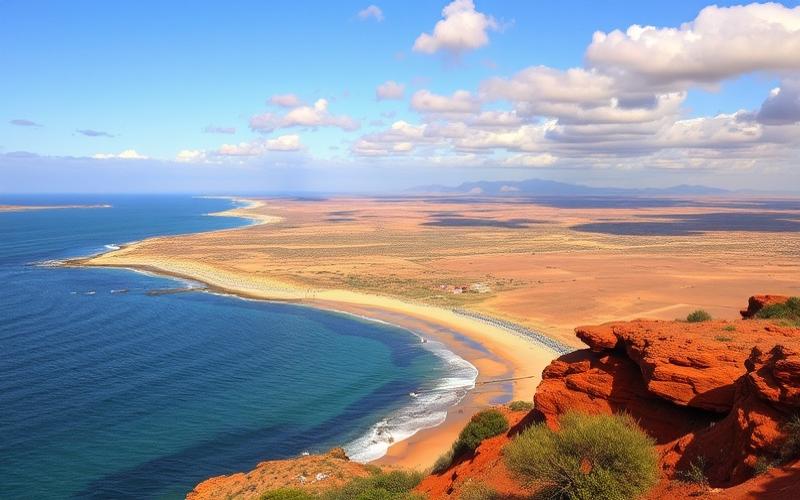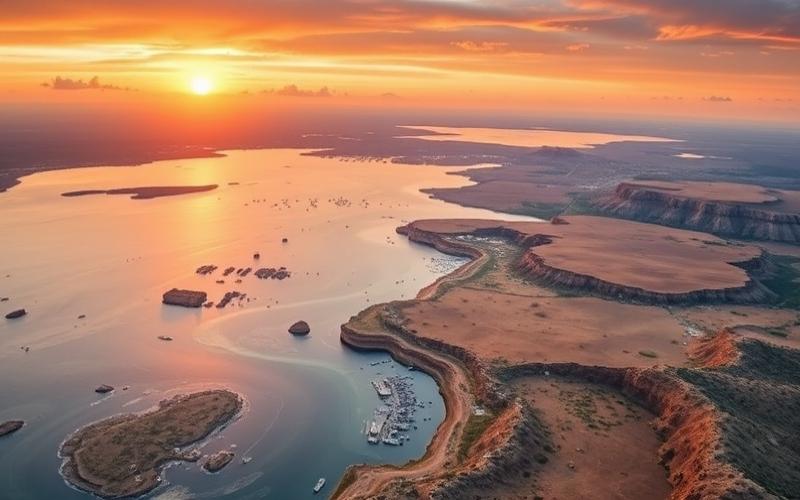
 Published on and written by Cyril Jarnias
Published on and written by Cyril Jarnias
In South Africa, obtaining a fishing permit is a crucial step for enthusiasts and professionals eager to explore the country’s aquatic treasures. Navigating through the complex procedures of this system may seem intimidating, but knowing the authorized zones and current regulations can transform this experience into a rewarding adventure.
This article will guide you through the essential formalities, helping you understand where and how you can legally cast your line and fully enjoy the abundance offered by South African waters, while respecting the preservation of precious natural resources.
Essential Steps to Obtain a Fishing Permit in South Africa
To obtain a fishing permit in South Africa, it is essential to follow a series of structured steps to ensure the legality of your activity and compliance with local regulations.
Essential Steps to Follow:
- Research Available Permit Types
- Different permits exist depending on the type of fishing: line fishing, spearfishing, aquarium fish collection, net fishing, etc.
- Each permit is associated with specific fishing zones and authorized species.
- Consult with Competent Authorities
- Inquire with the South African Department of Environment or fisheries management bodies for up-to-date information on regulations, seasons, protected species, and quotas.
- Consult official brochures and authority websites or visit local offices.
- Permit Application Procedure
- Permits can be purchased:
- At local post offices.
- Online, depending on the province or area concerned.
- Sometimes at certain fishing equipment stores or through local clubs.
- Documents generally required:
- Identification document (passport or ID card).
- Properly completed application form.
- Proof of permit fee payment.
- Permits can be purchased:
- Permit Costs
- Basic administrative fee: approximately 7 rand.
- Permit price for one season:
- Line fishing: 69 rand (full season) or 45 rand (4 weeks).
- Spearfishing: 87 rand (full season) or 50 rand (4 weeks).
- Additional levy for boat skippers.
- Prices may vary depending on the activity and chosen duration.
- Processing Times
- Permit issuance is generally immediate at post offices or authorized stores.
- For online applications or with provincial bodies, a few days’ processing time may be necessary.
- Renewal
- Permits can be renewed upon expiration via the same channel as the initial application.
- Check for any regulatory changes or authorized species updates with each renewal.
Summary Table of Permit Types and Indicative Costs:
| Permit Type | Duration | Cost (rand) | Sales Points |
|---|---|---|---|
| Line Fishing | Season | 69 | Post Office, Online, Stores |
| Line Fishing | 4 weeks | 45 | Post Office, Online, Stores |
| Spearfishing | Season | 87 | Post Office, Online |
| Spearfishing | 4 weeks | 50 | Post Office, Online |
| Boat Skipper Levy | Season | 87 | Post Office |
| Boat Skipper Levy | 4 weeks | 50 | Post Office |
Practical Tips for a Compliant and Law-Abiding Permit:
- Verify that the permit covers all planned activities: each type of fishing or zone may require a specific permit.
- Respect fishing seasons and protected species: certain periods and species are strictly regulated or prohibited for fishing.
- Always carry your permit during fishing activities.
- Regularly consult local authorities for any updates or changes to regulations.
- Inquire about catch limits and daily quotas to avoid any offenses.
Important:
Before any fishing trip, it is imperative to check the current regulations in the concerned area. Inspections are frequent, and penalties for illegal fishing can be severe.
Pre-Fishing Checklist:
- Permit purchased and valid
- Up-to-date identification documents
- Knowledge of authorized species and quotas
- Compliance with fishing seasons
- Verification of authorized fishing zones
- Adherence to specific regulations (minimum size, authorized gear, etc.)
Compliance with local regulations contributes to the preservation of fishery resources and the sustainability of fishing in South Africa.
Good to Know:
Consult with the South African Department of Environment to learn about the types of fishing permits suitable for authorized zones and allow approximately two weeks for application processing, providing the required documents and ensuring compliance with local regulations. Make sure your permit covers all planned activities and consider renewal before its expiration to avoid fines.
Regulations and Requirements for Expatriate Anglers
Expatriate anglers wishing to obtain a fishing permit in South Africa are subject to specific regulations, differing in some aspects from those applicable to residents.
Specific Eligibility Criteria
- Adult expatriates can apply for a permit, without a strict requirement for permanent residence.
- A valid passport and sometimes a visa or legal proof of stay are necessary.
Documents Required for Expatriates
- Copy of valid passport.
- Proof of temporary local address (accommodation, rental).
- Completed official permit application form.
- Payment of corresponding fees (see table below).
| Permit Type | Duration | Cost (ZAR) | Additional Documents |
|---|---|---|---|
| Line Fishing | Season | 69 | Passport, Address |
| Spearfishing | Season | 87 | Passport, Address |
| Line Fishing | 4 weeks | 45 | Passport, Address |
| Spearfishing | 4 weeks | 50 | Passport, Address |
Note: A mandatory one-time surcharge (7 ZAR) is added for any new application.
Differences from Resident Anglers
- Fees and procedures are generally identical, but expatriates must more systematically present foreign identification.
- Processing may take longer if the South African proof of address is temporary or provided by tourist accommodation.
Authorized Zones and Limitations
Expatriates can fish in all zones open to sport/recreational anglers outside of marine protected areas and strict reserves.
- Ocean coasts outside specifically marked “Marine Protected Areas”
- Public lakes and rivers open to recreational fishing
Some areas require additional local authorizations.
Imposed Limitations
- Strict adherence to daily quotas per species (example: Geelbek – max. 2/day ≥60 cm; Scotsman – max. 1/day ≥40 cm; Slinger – max. 5/day ≥25 cm)
Formal prohibition in all marine protected areas unless otherwise stated on the permit.
Application Process
- Obtain the form from a South African post office or via the Department of Forestry, Fisheries and the Environment website.
- Prepare all required documents (see list above).
- Pay in cash/debit card on-site or online according to available local options.
- Safely keep your receipt/permit during any fishing session.
Seasonal Restrictions and Quotas
- Some species are subject to a total annual closure during their breeding period (check before each outing).
- Specific daily quotas per species are mandatory under penalty of severe fines.
| Species | Size Limit | Daily Quota |
|---|---|---|
| Geelbek | ≥60 cm | Max. 2 catches/day |
| Scotsman | ≥40 cm | Max. 1 catch/day |
| Slinger | ≥25 cm | Max. 5 catches/day |
Always check the official documentation updated annually.
Penalties Incurred
- High fines from the first observed violation;
- Immediate confiscation of equipment;
- Possible expulsion or temporary ban from South African territory;
- Aggravated penalties if offense committed in a protected area;
- Possible criminal record for proven repeat offenses.
Practical Tips for Expatriates
- Ensure your permit precisely covers your intended type/zone/method of fishing.
- Always keep your passport/permit with you during inspections: absence = direct offense!
- Inquire at local stores before any outing to avoid unawareness of recent temporary seasonal closures or regulatory changes.
- Scrupulously respect minimum sizes & quotas: frequent inspections even outside peak tourist season!
- If you are new to South Africa: initially prefer outings accompanied by a licensed local guide who thoroughly knows the regulations applied to the chosen sector.
Any non-compliance can lead to immediate confiscation of catches/equipment as well as a significant fine or even legal prosecution.
Good to Know:
Expatriate anglers must provide proof of temporary residence and a validated passport to obtain a permit; authorized zones mainly include the west and south coasts with restrictions on protected species; severe fines apply for non-compliance with quotas or prohibited zones.
Classification of Authorized Fishing Zones in South Africa
The legal framework for managing fishing zones in South Africa is primarily based on the Living Marine Resources Act, amended in 2014, which regulates access to fishery resources and governs different categories of fishing (commercial, artisanal, recreational). Supervision and management fall under the Department of Agriculture, Forestry and Fisheries (DAFF) as well as the South African Department of Environment.
Main Types of Fishing Zones
| Zone Type | Description | Examples | Main Associated Species | Specific Rules |
|---|---|---|---|---|
| Coastal Zones | Near the coastline; accessible to small-scale and artisanal fishing. Subject to strict quotas and seasonal restrictions. | West Coast around Cape Town; Kogelberg. | Line fish (yellowtail, snoek), crustaceans (lobster), mollusks. | Legal minimum sizes; individual quotas; closed seasons for certain stocks. |
| Offshore Zones | Further from the coast; reserved for industrial/commercial fishing with specific licenses. Delimited within the South African exclusive economic zone (EEZ). | Open sea beyond 12 nautical miles; Southeast Atlantic. | Tuna, swordfish, hake. | Quotas per vessel/license; satellite/VMS surveillance; restrictions on authorized gear. |
| Marine Reserves/Marine Protected Areas (MPA) | Spaces dedicated to marine conservation where all extractive activity is limited or prohibited to preserve sensitive or threatened ecosystems. | Dassen & Robben Islands, Bird Island. | African penguin*, endemic/rare species. | Total or partial fishing ban depending on MPA zoning; possible annual adaptation. |
*Example: Six zones prohibited for 10 years around major African penguin colonies to ensure their survival — court decision enforced by the government.
Criteria Used to Delimit Zones
- Proximity to coastline/distance from shore.
- Ecological sensitivity and presence of threatened/endemic species.
- Observed fishing pressure on stocks.
- Traditional/artisanal vs. industrial use.
- Local socio-economic impact.
Specific Regulations
Non-exhaustive list:
- Legal minimum size for nearly 80 species: each catch must be measured before keeping.
- Individual/daily quotas according to species and type of authorization held.
- Closed seasons, particularly during critical periods like spawning or major migrations.
Specific framework: Small-scale fishers can organize into recognized cooperatives to obtain limited but guaranteed legal access to certain coastal species – this policy also aims for a positive impact on local socio-economic development.
Environmental Importance & Exemplary Initiatives
Protected areas ensure:
- Direct preservation of vulnerable species like the African penguin through targeted bans,
Concrete example:
To protect major colonies of the African penguin threatened with extinction before 2035 without strong intervention, a total ten-year ban was imposed in six key zones — a measure praised by local environmental NGOs.
Pilot programs involving local communities have enabled:
- The creation of women’s cooperatives purchasing directly from certified small-scale fishers to ensure traceability/fair prices while promoting local economic sustainability.*
Main challenges encountered:
- Combating illegal incursions into these protected spaces,
Persistent difficulty: ensuring effective control against strong economic pressures from both artisanal and industrial sides – constant need for annual regulatory adaptations based on the actual state of fishery resources observed on the ground.
To consult all official size limits and updated maps including MPAs/closed zones: always refer to documents issued annually by the South African Department of Agriculture, Forestry and Fisheries.
Good to Know:
Fishing zones in South Africa are classified into coastal zones, offshore zones, and marine reserves, each governed by specific rules, such as fishing seasons and authorized catch sizes, under the supervision of the Department of Fisheries, Forestry and Environment. Prioritizing conservation, some initiatives include restrictions on vulnerable species, like the white shark, to protect marine biodiversity.
Disclaimer: The information provided on this website is for informational purposes only and does not constitute financial, legal, or professional advice. We encourage you to consult qualified experts before making any investment, real estate, or expatriation decisions. Although we strive to maintain up-to-date and accurate information, we do not guarantee the completeness, accuracy, or timeliness of the proposed content. As investment and expatriation involve risks, we disclaim any liability for potential losses or damages arising from the use of this site. Your use of this site confirms your acceptance of these terms and your understanding of the associated risks.

